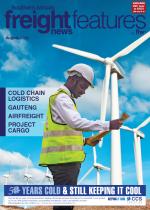Freight rates have skyrocketed amidst ongoing shipping supply chain disruptions, casting a shadow over any economic recovery at present.The airfreight sector has been no different. Hopes that the industry would see rates return to pre-Covid-19 levels have been all but dashed.“We don’t foresee rates normalising at the moment. We don’t believe it will ever return to pre-Covid-19 levels,” said Sharon Molle, airfreight manager at DSV in Johannesburg, during a recent Transport Forum discussion. “Many of the carriers are wanting to make up previous lost yields, but the demand continues to push up rates.”She said even when demand slacked off, the increased fuel price would ensure that rates did not drop. “The price of jet fuel is at an all-time high. We don’t see any relief on rates at this point in time.”George Wood, director of customer operations for sub-Saharan Africa at DHL, agreed and said rates would remain high for the foreseeable future. “Rates have softened on a few trade lines, but we don’t expect to see this across the airfreight sector. Expect rates to remain high going forward.”Wood said that in April, rates globally were 133% higher compared to the 2019 baseline. In February 2020, the EU rate was $2.50 per kilogram. It rose sharply to about $5.88 per kilogram in May that year as the impact of Covid-19 was being felt around the world. With passenger aircraft stranded due to lockdown restrictions, belly hold capacity became increasingly constricted during the course of the pandemic. Further spikes in rates were seen during the rest of 2020 and throughout 2021.By the end of December 2021, the cost of f lying cargo around the world had reached record levels. The airfreight rates between Hong Kong and North America were at about $12.72 per kilogram and, in some cases, even went as high as $14 per kilogram.

